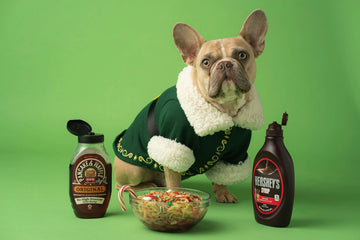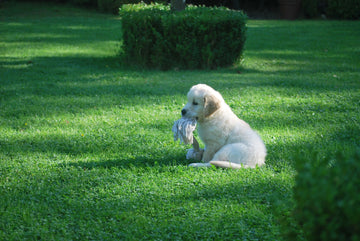
I. Why Do Dogs Eat So Quickly?

II. The Dangers of Eating Too Quickly

III. How a Slow Feeder Bowl Can Help
1. How Does a Slow Feeder Bowl Work? A slow feeder bowl is designed with ridges, mazes, or raised obstacles that force your dog to work around the barriers while eating. This slows down their pace and helps prevent overeating. Instead of gulping down large bites in seconds, your dog will have to take smaller bites, reducing the chances of digestive issues like bloating and vomiting.

3. Choosing the Right Slow Feeder Bowl for Your Dog
When selecting a slow feeder bowl, consider the following factors:
Size: Ensure the bowl is the right size for your dog’s breed and mouth.
Material: Choose non-toxic, durable materials that are safe for food use.
Difficulty Level: Some bowls have more complex designs and may be harder for certain dogs, especially seniors or flat-faced breeds like Pugs or Bulldogs.
Using a slow feeder bowl can be one of the most effective ways to slow down your dog’s eating, improve their digestion, and enhance mealtime. Combining this with other strategies, such as dividing meals into smaller portions or using puzzle feeders, can create an even more enjoyable and healthier feeding routine for your dog.
IV. FAQ
Q1: Can my dog get used to a slow feeder bowl if they’ve been eating too quickly for a long time?
A: Yes! It may take a little time for your dog to adjust, especially if they’re used to devouring their food quickly. Start by gradually introducing the slow feeder bowl, perhaps mixing it with their usual bowl. Over time, they’ll get used to the new pace, and mealtime can become a more relaxed and enjoyable experience.
Q2: What if my dog refuses to use the slow feeder bowl?
A: If your dog doesn’t seem interested in the slow feeder bowl, try different types or designs. Some dogs prefer bowls with more intricate mazes, while others may like simpler, flatter mats. You can also try adding a little of their favorite food to encourage them. Be patient and experiment until you find the best fit for your dog’s needs.
A: Absolutely. As dogs grow older, their metabolism slows down, and their eating habits can change. They may need less food, or they might develop preferences for softer, easier-to-chew food. It’s essential to adjust their diet to meet their changing nutritional needs and consult a vet for guidance if you notice significant changes.






